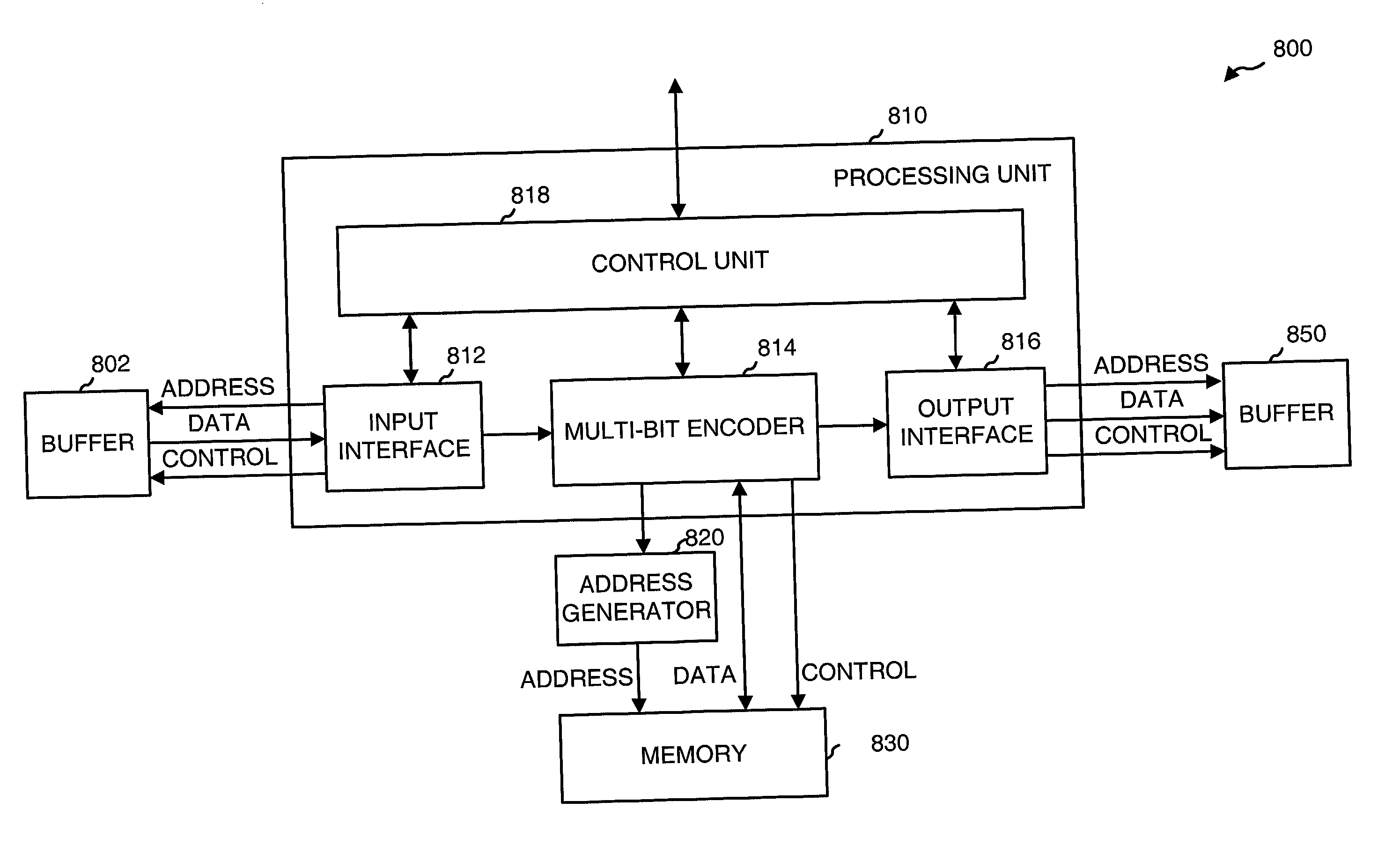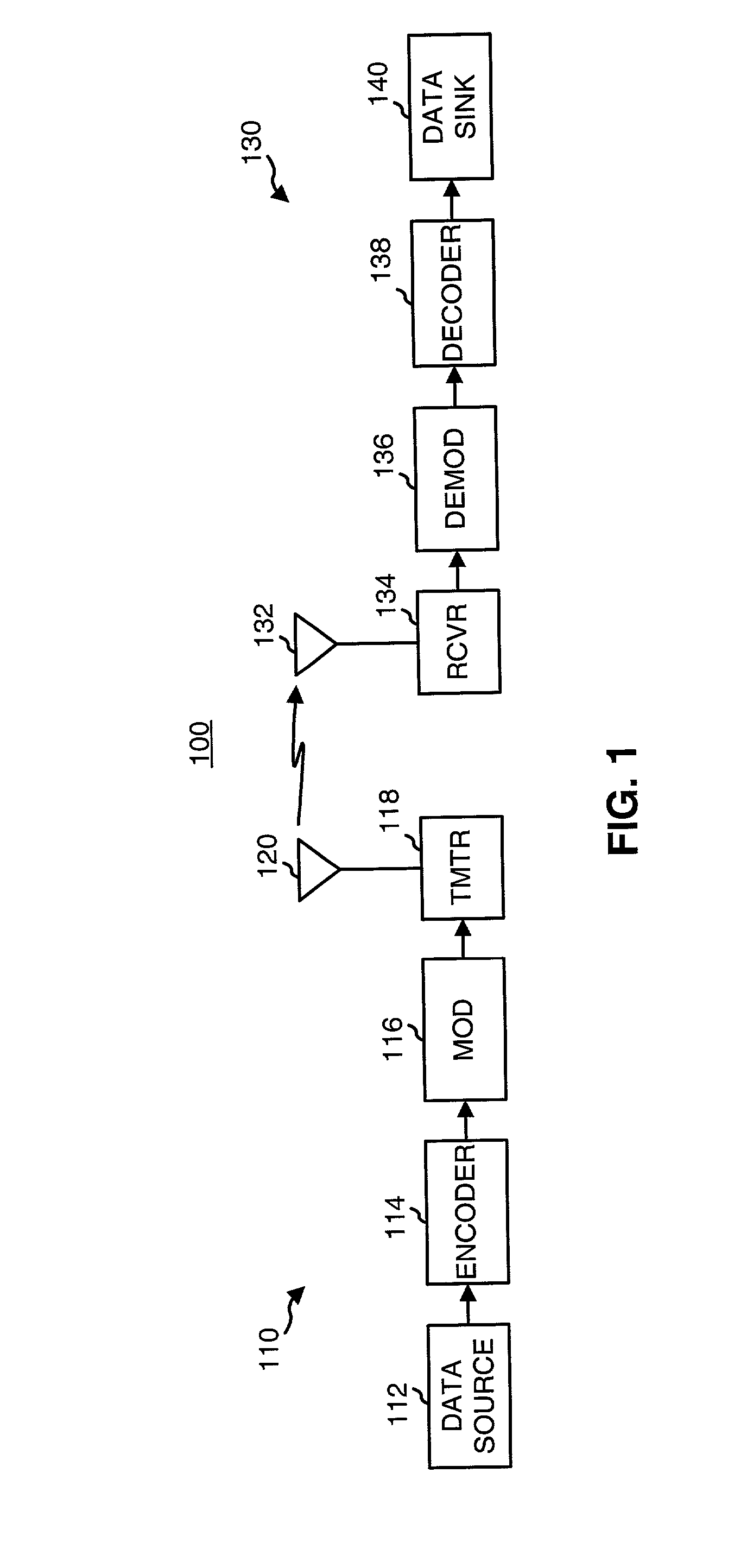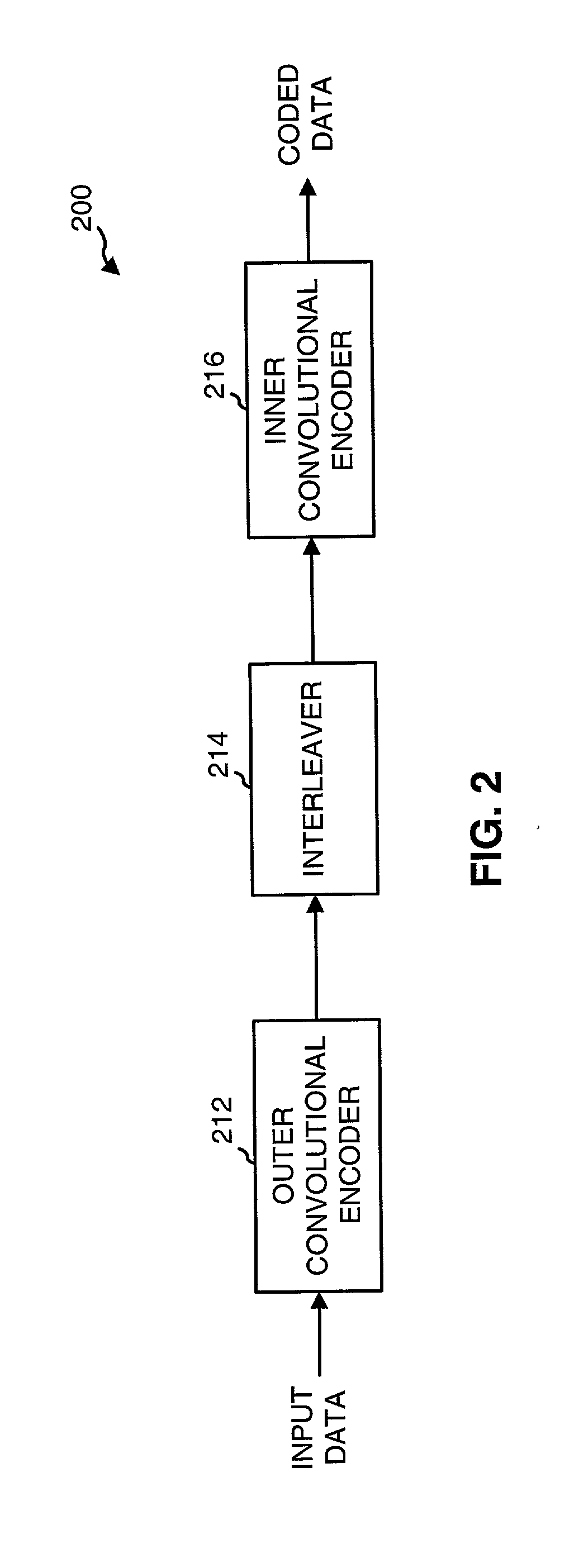Method and apparatus for coding bits of data in parallel
- Summary
- Abstract
- Description
- Claims
- Application Information
AI Technical Summary
Benefits of technology
Problems solved by technology
Method used
Image
Examples
Embodiment Construction
[0033] FIG. 1 is a simplified block diagram of an embodiment of a communications system 100 in which various aspects of the present invention may be implemented. At a transmitter unit 110, traffic data is sent, typically in packets or frames, from a data source 112 to an encoder 114 that formats and codes the data using a particular coding scheme. Encoder 114 typically further performs interleaving (i.e., reordering) of the code bits. A modulator (MOD) 116 then receives, channelizes (i.e., covers), and spreads the coded data to generate symbols that are then converted to one or more analog signals. The analog signals are filtered, (quadrature) modulated, amplified, and upconverted by a transmitter (TMTR) 118 to generate a modulated signal, which is then transmitted via an antenna 120 to one or more receiver units.
[0034] At a receiver unit 130, the transmitted signal is received by an antenna 132 and provided to a receiver (RCVR) 134. Within receiver 134, the received signal is ampli...
PUM
 Login to View More
Login to View More Abstract
Description
Claims
Application Information
 Login to View More
Login to View More - R&D
- Intellectual Property
- Life Sciences
- Materials
- Tech Scout
- Unparalleled Data Quality
- Higher Quality Content
- 60% Fewer Hallucinations
Browse by: Latest US Patents, China's latest patents, Technical Efficacy Thesaurus, Application Domain, Technology Topic, Popular Technical Reports.
© 2025 PatSnap. All rights reserved.Legal|Privacy policy|Modern Slavery Act Transparency Statement|Sitemap|About US| Contact US: help@patsnap.com



